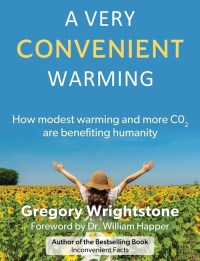 Fifteen international scientists recently collaborated to assemble one of the most comprehensive analyses of temperature and ice sheet changes for Greenland and the Canadian Arctic ever produced. Briner et al., (2016) synthesized over 100 records from a large and accumulating database to publish “Holocene climate change in Arctic Canada and Greenland” in the journal Quaternary Science Reviews.
Fifteen international scientists recently collaborated to assemble one of the most comprehensive analyses of temperature and ice sheet changes for Greenland and the Canadian Arctic ever produced. Briner et al., (2016) synthesized over 100 records from a large and accumulating database to publish “Holocene climate change in Arctic Canada and Greenland” in the journal Quaternary Science Reviews.
The results are not good news for those who wish to maintain that today’s Greenland Ice Sheet is losing ice area at an unprecedentedly accelerated rate, or that modern temperature values for the Arctic region are dangerously high. Greenland’s Ice Sheet has a larger ice extent now than it has had for most of the last 7,500 years; only the Little Ice Age period (~1300-1900 A.D.) had more ice mass. And both regions (Canadian Arctic and Greenland) are still 1 to 2¬∞C colder now than they were just a few thousand years ago.
The Greenland Ice Sheet Is Now At Nearly Its Highest Extent In The Last 7,500 Years
In the climate alarmism world, the Greenland Ice Sheet has been cooperating with the ice-is-melting-faster-than-ever paradigm for decades. For headline-creators who warn of “ominous” and “catastrophic” rates of change — and how humans are to blame for most of it — the Greenland Ice Sheet has been losing mass at “unprecedented” rates since the 1990s. For example: The Greenland Ice Sheet is losing 110 million Olympic size swimming pools worth of water each year. … ‘The Arctic Is Unraveling,’ Scientists Conclude After Latest Sobering Climate Report ‚Äì Unprecedented warming has sent the Arctic into uncharted territory, says latest NOAA report … Alert! Greenland’s Ice Now Melting At Catastrophic Speed
But what does “unprecedented” actually mean with regard to ice loss or temperature change in the Arctic? Effectively, precedence only extends back to the beginning of the 20th Century in most cases. Some may only extend precedence back to the 1961-1990 period, which is the baseline for nearly all surface mass balance estimates. So ice is said to be melting faster than any time since 1900, or since 1961-1990. But consider that in 1900, with centuries of solar minima and large-scale volcanic eruptions leading to plummeting Little Ice Age temperatures, the Greenland Ice Sheet had accumulated more ice and expanded its margins more than at any time in the last 7,500 years. And as the 15 scientists contributing to Briner et al. (2016) reveal in this encapsulating graph from the paper, the Greenland Ice Sheet’s surface area has only negligibly retreated from that high point (~1900). Today’s ice sheet extent is still among the highest of the Holocene.
Briner et al., 2016 “The Greenland Ice Sheet retracted to its minimum extent between 5 and 3 ka [5,000 and 3,000 years ago], consistent with many sites from around Greenland depicting a switch from warm to cool conditions around that time.”
Taking a closer look at what this graph depicts, we first of all can clearly see that Greenland’s ice sheet reached its much-lower-than-now minimum extent between 6,000 and 2,000 years ago, with the absolute lowest levels between 5,000 and 3,000 years ago. This millennial-scale ice sheet recession took place at a time when an anthropogenic influence was non-existent, and when CO2 levels were safely in the range of 260 ppm ‚Äì about 140 ppm lower than today’s levels (400 ppm).

















